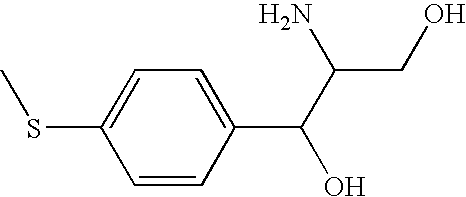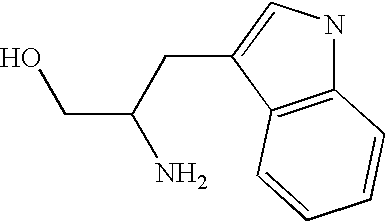Method for anion-exchange adsorption and anion-exchangers
a technology of anion exchange and anion exchange, which is applied in the field of anion exchange adsorption and anion exchange, can solve the problems that none of the methodologies in these three articles describe successful desorption processes, and achieve the effects of increasing ph, reducing ionic strength, and increasing binding to the ion exchange matrix
- Summary
- Abstract
- Description
- Claims
- Application Information
AI Technical Summary
Benefits of technology
Problems solved by technology
Method used
Image
Examples
Embodiment Construction
[0218] Part I: Synthesis of Anion-Exchangerrs
[0219] General:
[0220] Volumes of matrix refer to sedimented bed volume. Weights of matrix given in gram refer to the suction dried weight. It is understood that these matrices are still water solvated material. For reactions on a large scale, stirring refers to the use of a suspended, motor-driven stirrer since the use of a magnet bar stirrer will to damage the beads. Small-scale reactions (up to 20 ml) were performed in closed vials on a shaking-table. Determination of the functionality and the extent of allylation, epoxidation, or the degree of substitution of ion exchanger groups on the beads were made using conventional methods. Elementary analyses of the gels were also performed especially for analysing of the sulphur content.
[0221] A typical example for preparing the anion-exchangerrs described above is exemplified below using Sepharose 6 Fast Flow (Amersham Pharmacia Biotech, Uppsala, Sweden) as the base matrix.
[0222] 1. Introducti...
PUM
| Property | Measurement | Unit |
|---|---|---|
| ionic strength | aaaaa | aaaaa |
| ionic strength | aaaaa | aaaaa |
| molecular weight | aaaaa | aaaaa |
Abstract
Description
Claims
Application Information
 Login to View More
Login to View More - R&D
- Intellectual Property
- Life Sciences
- Materials
- Tech Scout
- Unparalleled Data Quality
- Higher Quality Content
- 60% Fewer Hallucinations
Browse by: Latest US Patents, China's latest patents, Technical Efficacy Thesaurus, Application Domain, Technology Topic, Popular Technical Reports.
© 2025 PatSnap. All rights reserved.Legal|Privacy policy|Modern Slavery Act Transparency Statement|Sitemap|About US| Contact US: help@patsnap.com



